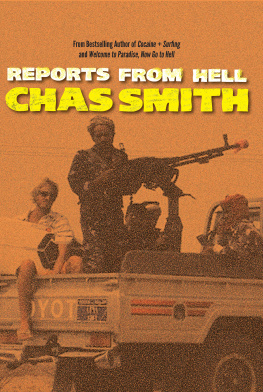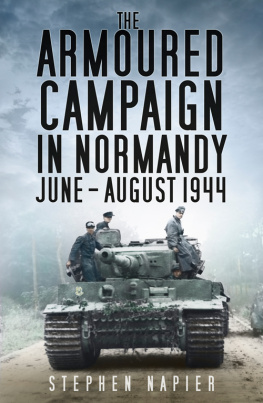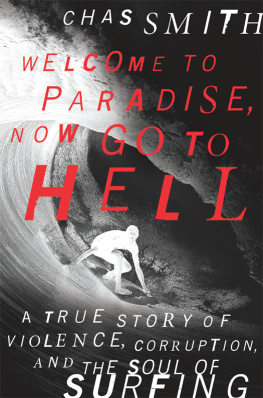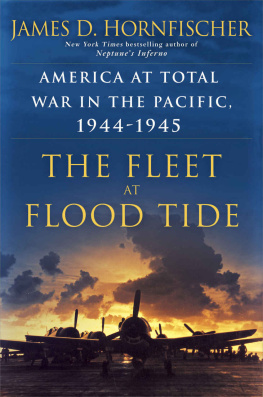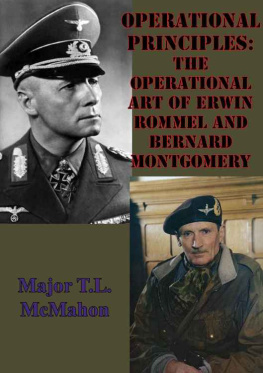This edition is published by PICKLE PARTNERS PUBLISHINGwww.picklepartnerspublishing.com
To join our mailing list for new titles or for issues with our books picklepublishing@gmail.com
Or on Facebook
Text originally published in 2009 under the same title.
Pickle Partners Publishing 2015, all rights reserved. No part of this publication may be reproduced, stored in a retrieval system or transmitted by any means, electrical, mechanical or otherwise without the written permission of the copyright holder.
Publishers Note
Although in most cases we have retained the Authors original spelling and grammar to authentically reproduce the work of the Author and the original intent of such material, some additional notes and clarifications have been added for the modern readers benefit.
We have also made every effort to include all maps and illustrations of the original edition the limitations of formatting do not allow of including larger maps, we will upload as many of these maps as possible.
ELEMENTS OF OPERATIONAL DESIGN IN THE PLANNING FOR THE MARIANAS CAMPAIGN IN 1944
by
MAJ Chas. J. Smith, USA
ABSTRACT
Operational art and the operational level of war became a doctrinal focus for the U.S. Army in the 1980s. This focus led to the development of the elements of operational design. These concepts are not new, and were developed in the interwar period prior to World War II at the staff and war colleges. During this time, however, the military did not doctrinally recognize the operational level or war or operational art. Even though the concepts were not recognized, the intellectual process permeated the officer education system prior to World War II. Clearly, American officers in World War II used something of operational art, including in the planning and execution of the Marianas Campaign. This monograph looks at the question in more detail, by testing the extent to which planners within CENPAC used the elements of operational design in the Marianas Campaign, including end state and objectives, effects, center(s) of gravity, decisive points, direct and indirect action, lines of operation, operational reach, simultaneity and depth, timing and tempo, leverage, balance, anticipation, culmination, and arranging operations. The implication of this study is that as current doctrine evolves, the development, education, and execution of operational concepts in the World War II era continue to be useful.
INTRODUCTION
Central Pacific Area (CENPAC) forces executed the Marianas Campaign in the summer of 1944, incorporating forces from the U.S. Navy, Marines, Army, and Army Air Forces (USAAF). {1} CENPAC utilized the elements of operational design in planning and executing the campaign, tying into national strategy and bringing Japan closer to defeat. The successful campaign destroyed significant Japanese ground, sea, and air forces, and established forward bases for U.S. bombers to strike Japan, as well as staging areas to assault other strong points.
American forces conducted the Marianas Campaign during a war with two major theaters that contained multiple areas of operation within those theaters. Each campaign influenced other areas of operation and the conduct of subsequent operations. The elements of operational design were critical for commanders and planners in understanding the situation and developing a sound, logical plan to succeed in the Marianas. Understanding and implementing these elements remain critical for commanders and planners to adeptly conduct campaign planning in the contemporary environment.
The terms operational level of war and operational art did not enter into U.S. field manuals or gain cognitive recognition until the 1980s. The 1982 version of FM 100-5 recognized three levels of war, now including the operational level, and emphasized agility, initiative, depth, and synchronization. {2} The revised 1986 version for the first time acknowledged and defined operational art. {3} Operational theory began with the Soviets in the late 1920s. {4} The Soviet cognitive recognition began at this point, thus, apart from presenting a unique innovation of thought, the Deep Operation theory reflects the conceptual change which has taken place in modern warfare, namelythe recognition of an intermediate level between strategy and tactics and the application of system thinking to the military field. {5} Even with this conceptual thought, Jacob W. Kipp, analyst of Soviet military affairs, notes that only In the final phase of the war Soviet operations achieved what pre-war theory had promised. {6}
The U.S. military lacked a general theory and did not cognitively recognize the operational level of war; however, the education system in the 1920s and 1930s provided an operational art and joint operation framework to officers attending the Command and General Staff and War Colleges. Michael Matheny, in writing his School of Advanced Military Studies monograph, concludes that operational art did exist in the American Army during the interwar period. {7} Clausewitz began to have a large impact in the 1920s on the American military education, manuals, and publications. Clausewitz believed that attempting to define the operational level of war added complexity to something already very complex, and this could have had a major influence on the U.S. militarys lack of cognitive recognition.
Intellectual military thinking progressed during the interwar years. Matheny notes, Doctrinal thought on campaign planning and operational design made good progress at Ft. Leavenworth during the twenties. {8} Concepts such as branches and sequels, phased operations, lines of operation, culminating point, and the importance of logistics emerged and became a permanent part of higher level planning. {9} Retired Brigadier General Harold W. Nelson adds that most of the elements we now associate with the operational level of war were present in these doctrinal statements, though badly obscured by the nomenclature. {10} Milan Vego, professor of joint military operations at the Naval War College, notes that In 1927 the U.S. Naval War College adopted for the first time the study of operational problems in addition to strategic and tactical ones; this practice continued through the 1930s. {11} The Marine Corps prepared the Tentative Landing Manual in 1934 which provided the enduring basis in the development of amphibious doctrine. {12} The manuals concept provided the initial basis for studying the operational problems of transportation, fire support, logistics, and logistics over great distances. Although the operational level of war was not officially recognized, all three services implicitly recognized it and progressed the ideas in advanced officer education.
The War College took the operational concepts to the joint level with the Army and Naval War Colleges conducting officer exchanges, In 1928 the War Department directed the War College to instruct officers not only in the operations of echelons above corps but also in the joint operations of the army and navy. {13} Matheny notes the resulting impact of the education system on the officers it trained, in addition to developing a system and formats for plans which linked national aims to military objectives in a theater of operations, the college developed joint operational planning. {14} According to the Principles of Strategy written by COL William K. Naylor, Director of General Staff School in the 1920s, By massing a preponderance of force while economizing elsewhere, the commander plans to achieve an advance deep into the hostile formation. If this operation is successful, it is frequently decisive. It has for its object the separation of the enemys force into two parts and then the envelopment of the separated flanks in detail. {15} Matheny adeptly analyzes Naylors principles, This analysis certainly compares favorably with the most prominent theorists of the day. In fact, it could have been written by Guderian or Tukhachevksy. {16}




